This article was medically reviewed by Luba Lee, FNP-BC, MS. Luba Lee, FNP-BC is a Board-Certified Family Nurse Practitioner (FNP) and educator in Tennessee with over a decade of clinical experience. Luba has certifications in Pediatric Advanced Life Support (PALS), Emergency Medicine, Advanced Cardiac Life Support (ACLS), Team Building, and Critical Care Nursing. She received her Master of Science in Nursing (MSN) from the University of Tennessee in 2006.
There are 9 references cited in this article, which can be found at the bottom of the page.
wikiHow marks an article as reader-approved once it receives enough positive feedback. In this case, 92% of readers who voted found the article helpful, earning it our reader-approved status.
This article has been viewed 74,949 times.
Magnesium is an essential mineral that’s already in your body. It helps regulate your nervous system and muscles. The best way to get additional magnesium is to take it in the form of magnesium citrate. Your doctor may tell you to drink it to relieve occasional constipation or to prepare you for a colonoscopy. It works by increasing the amount of water in your intestines, making it easier for you to have a bowel movement. In most cases, magnesium citrate is safe for everyone over 6 years of age, but always check with your doctor before using it.
Steps
Relieving Constipation
-
1Talk to your doctor to see if magnesium citrate is right for you. In most cases, magnesium citrate is safe if you take it to relieve constipation. However, some present or past health issues can make regular or higher doses less safe. Talk to your doctor if you:[1]
- Have stomach pain or nausea
- Have ever had kidney disease
- Have recently experienced a sudden change in your bowel habits
- Are vomiting regularly due to some condition
- Are on a low-sodium or low-magnesium diet
- Are taking medications to treat HIV
- Are taking vitamin D, CoQ10, or sodium phosphate supplements and have reduced kidney function
- Are taking penicillamine (Depen Titratabs, Cuprimine) or fluoroquinolone antibiotics (Cipro, Factive, Quinodis, Megalocin, Levaquin).
-
2Drink magnesium citrate on an empty stomach or wait 2 hours after eating or taking medication. The laxative effects work best when your stomach is empty or nearly empty. If you’ve only had a small snack or bite to eat, you can wait just 1 hour instead of 2.[2]
- If you take other supplements or medications, don't take them within 2 hours of taking magnesium citrate because it could cause your body to absorb less of the medication.
- You can take magnesium citrate with a full belly, but it will delay the effects and may cause an upset stomach.
Advertisement -
3Take 5 to 10 fluid ounces (150 to 300 mL) at a time or in divided doses. How much you should drink to relieve constipation depends on your age. If you’re giving it to a child under 6 years of age, talk to your doctor or pediatrician first. Otherwise, stick to the basic recommendations:[3]
- Anyone over 12 years of age: 5 to 10 fluid ounces (150 to 300 mL) with 8 fluid ounces (240 mL) of water in a single dose or divided doses.
- Children 6 to 12 years of age: 3.3 to 5 fluid ounces (98 to 148 mL) with 8 fluid ounces (240 mL) of water in a single dose or divided doses.
-
4Drink 8 fl oz (240 mL) of water after swallowing the dose. Drinking 8 fl oz (240 mL) of water will help push the magnesium citrate through your digestive system. You might find it easier to drink the magnesium citrate after letting the bottle chill in the refrigerator for 20 minutes. You don’t have to chill it, but it can help soften the bitter, metallic taste.[4]
- To help mask the taste, mix the liquid with 8 fluid ounces (240 mL) of a flavored sports drink or juice. If you choose to mix it, you don’t need to drink another 8 fluid ounces (240 mL) of water.
- If you’re an adult, you can take up to 10 fluid ounces (300 mL) of magnesium citrate per day. Take it all at once or in 2 separate doses.
- If you’re giving it to a child ages 6 to 12, don’t give them more than 5 fluid ounces (150 mL) per day unless your pediatrician says it’s okay.
-
5Expect a bowel movement within the next 30 minutes to 6 hours. How soon it takes to kick in depends on your digestive system and how much you drank. Make sure you have access to a bathroom after taking it so you're not forced to uncomfortably hold it in.[5]
- You may experience gas, a bubbling feeling in your stomach, and mild stomach cramps while the magnesium citrate is taking effect.
- If you don't have a bowel movement after taking magnesium citrate, call your doctor because it could be a sign of some other condition.
-
6Call your doctor if you have any severe side effects. It’s very rare to experience any intense side effects with magnesium citrate. In most cases, moderate diarrhea is the only (and most uncomfortable) effect. Any severe reactions could be a sign of some other condition, so stop taking it and call your doctor if you experience:[6]
- Irregular or slow heartbeat
- Confusion or mood swings
- Nausea, drowsiness, or weakness
- Abdominal pain, severe diarrhea, bloody stools, or rectal bleeding.
Drinking Magnesium Citrate before a Colonoscopy
-
1Eat only low-fiber foods 2 to 3 days before your appointment. Your bowels need to be as empty as possible in order for the doctor to get an accurate reading from the colonoscopy. Low-fiber foods like white-flour breads and grains, white rice, and low-fiber cereals are all good things to eat while preparing for your appointment.[7]
- Sushi, poke bowls, and curries with white rice are all delicious choices!
- Avoid whole grains (like brown rice, whole wheat bread and pasta), nuts, legumes, fruits with skin or seeds, and tough meats because they can clog up your digestive tract.
- As for vegetables, canned or cooked veggies without skins like mushrooms, peeled carrots, peeled cucumbers, peeled potatoes, turnips, and asparagus tips are all good options. Corn, potatoes with skin, brussels sprouts, lima beans, and onions are off-limits for now.
-
2Go on a clear liquid diet the day before your appointment. Only take in clear liquids like water, tea, coffee (without milk, sugar, or creamer), light-colored juices (apple, white grape, white cranberry), broths, and sports drinks the day before your appointment. Avoid red or purple-colored juices, alcohol, heavy soups, and milk because these can affect the reading your doctor will get from the procedure.[8]
- Continue fasting until your appointment and don't drink anything (including water) in the morning before your appointment.
-
3Refrigerate the bottles at least 1 hour before you plan to drink them. Citrate of magnesium tastes bitter, salty, and metallic (i.e., not good!). Chilling it beforehand will make it easier to drink, especially if you have a sensitive palate.[9]
- Don't put it in the freezer because it can affect the thickness of the liquid and, in turn, make it less effective.
- Buy cherry, lemon, or lime-flavored magnesium citrate to help mask the metallic, bitter taste.
-
4Drink a 10 fl oz (300 mL) bottle the night before your appointment. Around 6:00 or 7:00 PM, down an entire bottle of magnesium citrate. Follow up with an 8 fl oz (240 mL) glass of water to push it through your system.[10]
- Depending on your weight, age, and particular condition, your doctor may tell you to only drink half a bottle at a time.
- You may have gas, slight stomach pain, or notice a bubbling feeling in your gut—these are common side effects that will ease up once you have a bowel movement.
-
5Don't eat any solid foods for the rest of the night and the next morning. In most cases, you'll need to avoid eating any solid foods or milk products until your appointment is over. Juice, Jell-O, tea, popsicles, sports drinks, broths, and hard candies are okay as long as they're not red or purple.[11]
- Red or purple dye in juices and other items can make it hard for the doctor to see the lining of your colon, skewing the results.
-
6Drink a second bottle 5 hours before your appointment. The final 10 fl oz (300 mL) bottle of magnesium citrate will clear your bowels completely before the colonoscopy. Chase it down with 8 fluid ounces (240 mL) of water just like you did with the first bottle.[12]
- It can take anywhere from 30 minutes to 3 hours to feel the effects, so stay near a bathroom if you can.
- Keep fasting and don't have anything else to drink before your appointment (including water).
Warnings
- Do not take magnesium citrate on a long-term basis because your body can work up a tolerance and come to depend on it in order to have a bowel movement.[16]⧼thumbs_response⧽
References
- ↑ https://medlineplus.gov/druginfo/meds/a619019.html
- ↑ https://medlineplus.gov/druginfo/meds/a619019.html#side-effects
- ↑ https://www.drugs.com/pro/magnesium-citrate-liquid.html
- ↑ https://medlineplus.gov/druginfo/meds/a619019.html#side-effects
- ↑ https://www.ncbi.nlm.nih.gov/pmc/articles/PMC3266155/
- ↑ https://medlineplus.gov/druginfo/meds/a619019.html#side-effects
- ↑ https://www.health.harvard.edu/diseases-and-conditions/preparing-for-a-colonoscopy
- ↑ https://wa.kaiserpermanente.org/html/public/specialties/gastroenterology/colon-diet1
- ↑ https://www.choc.org/wp/wp-content/uploads/2016/02/CHOC-Colonoscopy-Prep.pdf
- ↑ https://health.uconn.edu/gastroenterology/patient-care/patient-resources/colonoscopy-preparation-instructions-magnesium-citrate/
- ↑ https://health.uconn.edu/gastroenterology/patient-care/patient-resources/colonoscopy-preparation-instructions-magnesium-citrate/
- ↑ https://health.uconn.edu/gastroenterology/patient-care/patient-resources/colonoscopy-preparation-instructions-magnesium-citrate/
- ↑ https://www.health.harvard.edu/diseases-and-conditions/preparing-for-a-colonoscopy
- ↑ https://www.health.harvard.edu/diseases-and-conditions/preparing-for-a-colonoscopy
- ↑ https://www.health.harvard.edu/diseases-and-conditions/preparing-for-a-colonoscopy
- ↑ https://www.aafp.org/afp/2015/0915/p500.html
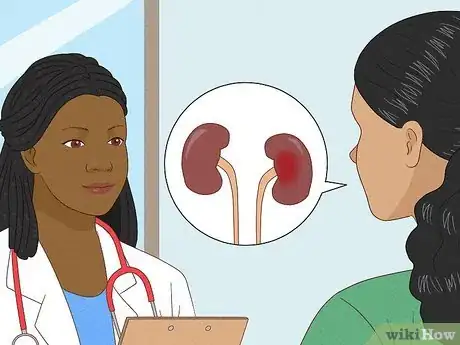
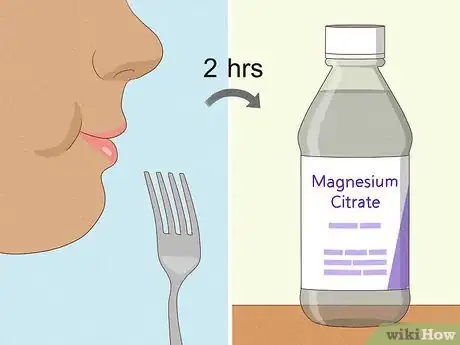



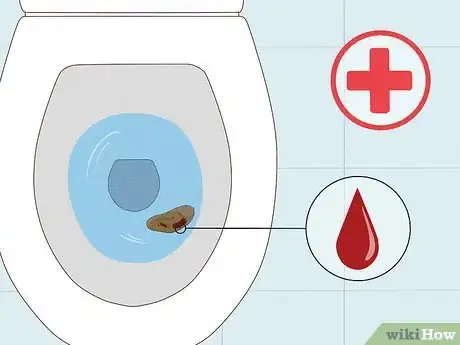
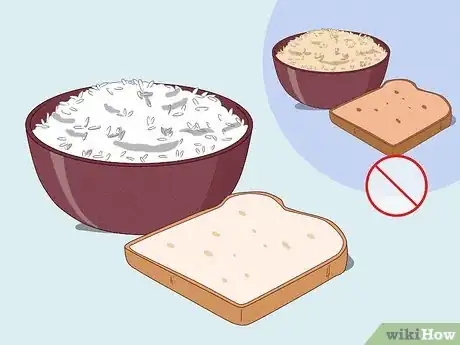
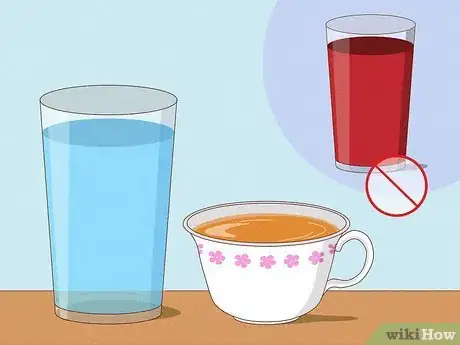






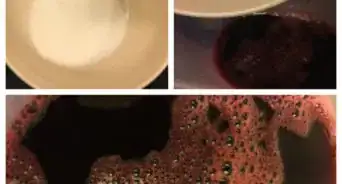



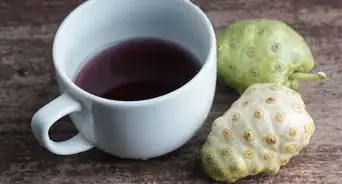
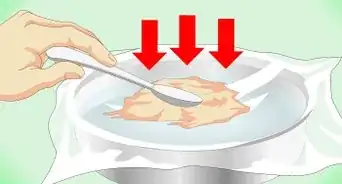
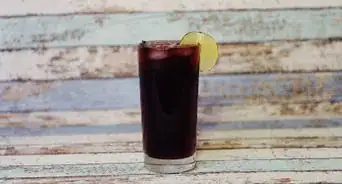
















































Medical Disclaimer
The content of this article is not intended to be a substitute for professional medical advice, examination, diagnosis, or treatment. You should always contact your doctor or other qualified healthcare professional before starting, changing, or stopping any kind of health treatment.
Read More...